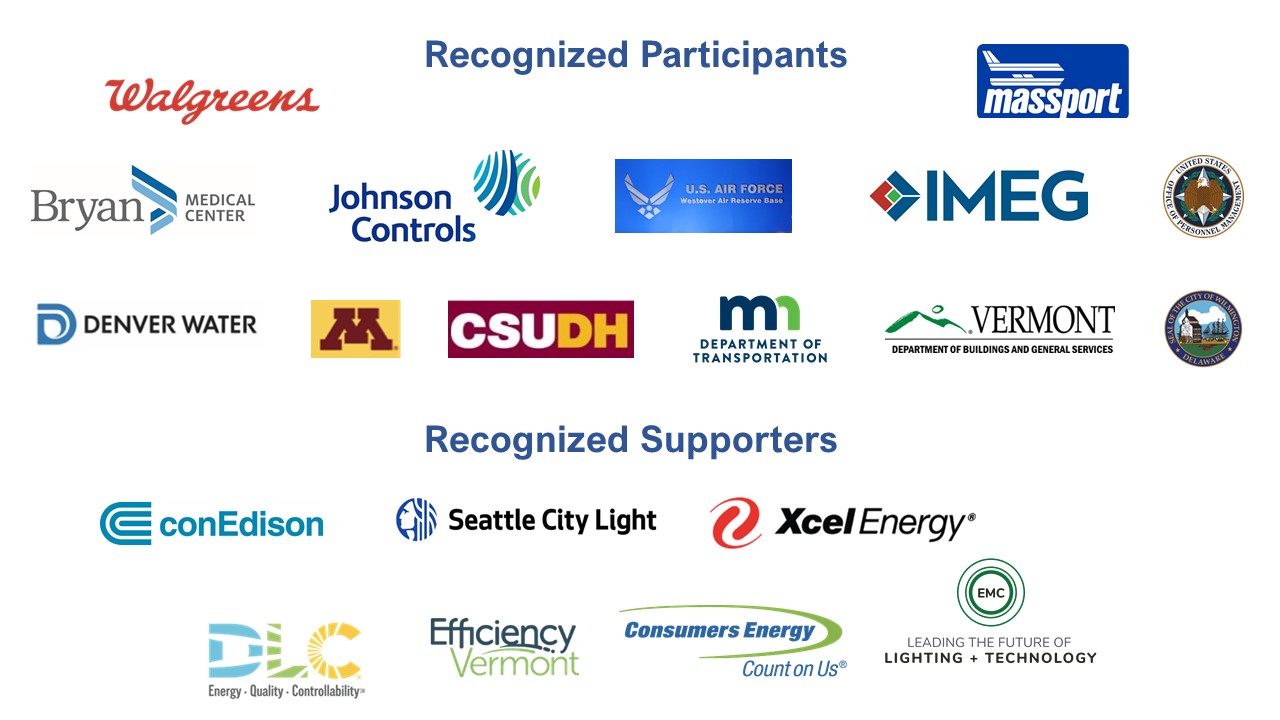The first year of the Integrated Lighting Campaign (ILC) is a wrap, and this year’s participants were nothing short of exemplary. Thirteen participants were recognized for demonstrating innovative applications of advanced sensors and controls in lighting, or the integration of lighting with other building systems.
View the complete list of recognized participants.
“We were blown away by some of this year’s submissions and what they were able to achieve with integrated lighting, ” said Felipe Leon, ILC Lead, “the participants were truly thinking outside the box and prove that lighting is not just for lighting anymore.”

This year’s participants were recognized at the 2021 IES Annual Conference in August and earlier this month through a special recognition webinar that showcased each participant and the outcomes of their integrated lighting projects. Eleven participants and supporters discussed integrated lighting projects and offered valuable lessons learned for others hoping to take on similar projects.
The recognition webinar recording is now available for viewing.
Integrated lighting plays central role in enabling holistic energy management
Since its inception, the ILC has recruited more than 43 participants and 95 supporters from a variety of sectors.
“This year’s participants featured a diverse representation of building types and industries, everything from health care to retail to higher education,” said Tracy Beeson, lead researcher for the ILC.
Although all participants approached their particular lighting integration using different approaches and strategies, they all had a goal of maximizing energy efficiency, reducing greenhouse gas emissions, and contributing to the comfort, safety, and wellbeing of their occupants.
Bryan Health Systems, for example, incorporated task tuning levels and pre-set lighting scenes to enable highly accurate medical diagnoses for radiologists and physicians. They also installed lighting controls that allowed the Emergency Department to control heliport lights from six floors below using a networked switch.
Higher education institutions like the University of Minnesota and California State Dominguez Hills were recognized for achieving significant energy savings by integrating lighting with heating, ventilation, and air conditioning (HVAC) and through the installation of occupancy sensors.
This year, the ILC also recognized impressive outdoor lighting projects. The City of Wilmington replaced 1,732 existing streetlight fixtures with energy-efficient LED luminaires with wireless communication nodes that allow them to increase the light levels gradually each year to account for lumen depreciation and to automate the identification of required maintenance. This greatly reduces streetlight maintenance costs and eliminates 705.36 metric tons of annual CO2 emissions.
“What we really like about this project is that it simplified maintenance. Now I don’t have to hire staff to check if lights are working because these lights are self-reporting and I know where they are. It’s a huge costs savings for the city. But they are also adjustable over different areas in the city; for example, in downtown, we’re looking to use lighting to tell us which parking spaces are available, and in areas that are challenged when it comes to safety, we can make the streetlights brighter to make them safer. We really are excited about the safety aspect of this,” said Kelly Williams with the City of Wilmington.
“It’s just so exciting to see the opportunities available, and what you can do just with a small number of lights that you change out,” she added.
Other participants incorporated lighting as a pathway for meeting operational and business goals. One retailer, Walgreen Company, conducted two pilot projects in four different retail locations. Through the Life Safety Pilot, Walgreen Company was able to automate the reporting and testing of emergency lighting operations, reducing both the need for team members to manually open outage tickets, as well as the maintenance costs for diagnostics. During the Basket Tagging Pilot, carts were equipped with Bluetooth-enabled asset tags to track traffic patterns. The pilot yielded invaluable insights about ideal points of entry and uncovered shopping patterns that could potentially be used to improve the overall customer experience.
During the recognition webinar, several of the participants also shared notable outcomes of their integrated lighting project.
Kenny Seeton, building manager for CSU-Dominguez Hills, says the level of granularity provided by lighting integration allows him to only cool spaces that are being used. He says Bluetooth capabilities afforded by lighting can enable wayfinding on larger campuses, and integrating lighting occupancy sensors with building automation systems uncovers valuable trends in space utilization.
For Johnson Controls, lighting integration played a central role in enabling a top-to-bottom smart building environment and an enhanced occupant experience. The project included a long list of smart building applications and advanced lighting technology, including noise cancelation, HVAC controls, plug load management, occupancy, and even flush valves to monitor toilet water systems and paper towel dispensing in the bathrooms.
Matt DeLoge said the key to success is to adapt the systems to the building occupants and how they interact with their environment—not the other way around.
The ILC also recognized seven supporting partners for their contributions to the adoption of high-efficiency lighting with advanced sensors and controls and integration with other systems. Recognized exemplary supporters are Con Edison, Consumers Energy, DesignLights Consortium, Efficiency Vermont, Energy Management Collaborative, Seattle City Light, and Xcel Energy. In aggregate, these organizations incentivized approximately 145,000 luminaires in over 300 buildings, providing almost $14 million in incentives.
The ILC will be developing and releasing a package of educational case studies featuring this year’s recognized participants. The case studies will include practical lighting integration strategies, best practices, and lessons learned useful to building owners and facility managers considering taking on similar projects.
Now that year one is complete, the ILC team is excited about what year two of the campaign will bring.
Ready to join the campaign? Join the ILC or pre-submit your project for 2022.
About the Integrated Lighting Campaign
The ILC is a collaboration between the DesignLights Consortium® (DLC), Illuminating Engineering Society (IES), the International Facility Management Association (IFMA), interNational Association of Lighting Management Companies (NALMCO), the Lighting Controls Association (LCA), U.S. General Services Administration (GSA), and the U.S. Department of Energy.